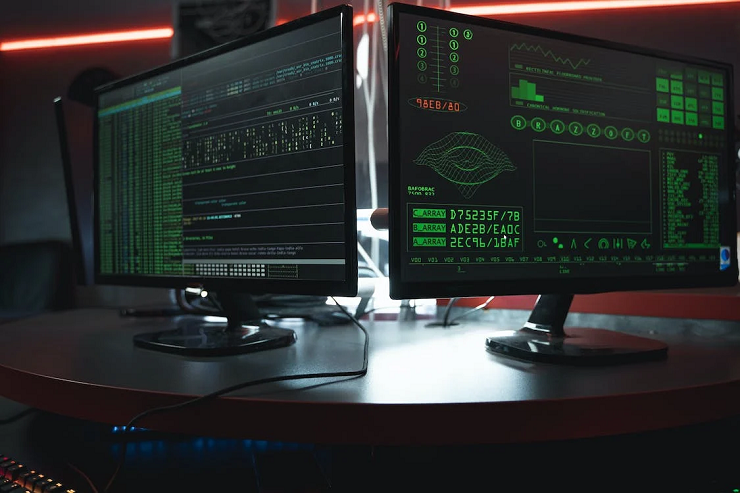

In an era marked by an alarming frequency of data breaches and the looming presence of cyber threats, the role of Artificial Intelligence (AI) in reshaping the realm of cybersecurity emerges as an undeniable beacon of hope. With the relentless surge of cyber attacks on a global scale, organizations are embracing AI-driven solutions as a beacon of resilience to fortify their increasingly vulnerable defence mechanisms. Amidst this ever-expanding battlefield, one pivotal arena where AI casts its transformative spell is within the domain of third-party risk management.
In the ensuing discourse, we shall delve into the nuanced influence of AI on the intricate fabric of cybersecurity, with a particular focus on the profound ramifications it holds for third-party risk management.
The past decade has witnessed an unsettling surge in the frequency and ferocity of cybersecurity threats. According to a recent revelatory report from a prominent cybersecurity firm, the harrowing statistic that over 5 million data records were either lost or stolen each day in 2023 is a grim reminder of the formidable challenges that organizations grapple with. While traditional security measures have exhibited some efficacy, their limitations in combating the evolving sophistication of modern cyber-attacks have become increasingly evident. In this crucible of adversity, organizations are pivoting towards AI-infused solutions as a strategic lever to navigate the contours of this ever-transforming terrain.
At the heart of this paradigm shift lies the remarkable potential of Artificial Intelligence to inject a newfound dimension of adaptability and precision into the canvas of cybersecurity. Anchored within the tapestry of AI, Machine Learning algorithms emerge as formidable agents of transformation. The unassailable capacity of these algorithms to dissect colossal volumes of data with unprecedented alacrity empowers them to discern intricate patterns and unveil anomalies that might evade even the astutest human analysts. This prowess is particularly pertinent in unearthing nascent, hitherto unencountered threats, thereby fostering a realm where response times are expedited and the scope of potential damage is mitigated.

In a landscape where interconnectivity is the bedrock of modern business operations, enterprises bear the dual responsibility of safeguarding their cybersecurity while ensuring the sanctity of the sprawling network of third-party vendors and collaborators. The tendrils of vulnerability extend far and wide, as a breach within any of these auxiliary entities can reverberate with catastrophic consequences across the primary organization. This is the precise juncture where AI-orchestrated third-party risk management emerges as a sentinel of protection.
AI-driven solutions surge ahead in the intricate art of evaluating and navigating the labyrinthine landscape of third-party risks. Equipped with the ability to scrutinize vendors’ security practices autonomously, these solutions cast an analytical gaze upon their digital imprints, meticulously track the evolution of their security protocols, and adeptly unearth nascent vulnerabilities that lurk beneath the surface. Notably, a recent empirical study has unveiled a staggering 40% reduction in security incidents stemming from third-party vendors within organizations that have harnessed the prowess of AI for third-party risk management.
Integrating AI within the tapestry of cybersecurity is equivalent to a harmonious symphony of augmentation rather than a symphony of replacement. The armory of AI-driven tools is adept at combing through voluminous datasets to pinpoint latent threats, thereby affording human analysts the luxury of directing their energies toward tasks that hinge upon contextual comprehension and strategic decision-making. This symbiosis between AI and human intellect begets security operations that are not just streamlined but imbued with a heightened degree of efficacy.
Intriguingly, the annals of AI-driven cybersecurity solutions are defined by an evolutionary trajectory that mirrors the dynamic landscape it safeguards. Continual learning and adaptation constitute the very essence of these solutions, evolving in tandem with the ebb and flow of new data and emerging threats. This unprecedented capability to metamorphose and refine tactics over time confers an upper hand in an ecosystem where cybercriminals are ceaselessly refining their stratagems. Cybersecurity is one of the multiple uses of artificial intelligence. A report by Norton showed that the global cost of a typical data breach recovery is $3.86 million.

While the allure of AI in cybersecurity is unequivocal, it is paramount to confront the attendant challenges head-on. A pivotal concern revolves around the latent biases harbored within AI algorithms. If not judiciously trained, ill-equipped AI systems can inadvertently propagate and perpetuate existing biases inscribed within the data they are nurtured on. This inadvertent bias can cascade into discriminatory practices or even overlooking specific categories of threats.
Moreover, ethical considerations orbit the constellation of AI within cybersecurity. The domain of automated decision-making, even within the precincts of security, galvanizes cogitation around accountability and transparency. Striking an equitable equilibrium between the assistance lent by AI and the oversight administered by human understanding is imperative to uphold the dual tenets of practicality and ethics underpinning security operations.
As the march of AI marches forth with unwavering resolve, its role in sculpting the contours of the cybersecurity landscape will only burgeon in prominence. The fusion of AI’s analytical acumen with the sagacity of human intuition engenders the promise of a resilient bastion against the relentless tide of cyber threats. The vanguard of organizations that wholeheartedly embrace AI-driven solutions for third-party risk management and the broader ambit of cybersecurity is poised to harvest a substantial advantage in the grand tapestry of safeguarding their digital assets.
The era of AI-powered cybersecurity has unfurled its wings, and the resounding echo of its impact reverberates within the precincts of third-party risk management and the broader spectrum of cybersecurity domains. With an innate ability to navigate colossal datasets, unveil concealed anomalies, and perpetually refine itself, AI emerges as the vanguard of organizational defenses against the diverse facets of contemporary cyber threats. Yet, in our stride to harness the bounties of AI, the need to remain vigilant vis-à-vis latent biases and ethical quandaries remains non-negotiable. The odyssey towards a more secure digital vista is indubitably a collaborative venture, interweaving the tapestry of human understanding with the marvels of technological ingenuity encapsulated within AI.
Author:
Himanshu Joshi is the Co-founder and CTO of Beaconer, an esteemed enterprise specializing in managed third-party risk using the cloud native AI based solution. With an extensive track record spanning over 15 years, he possesses a wealth of expertise in the realm of Cybersecurity, having contributed significantly across various domains. Past few years, his primary focus has centred on Third-Party Risk assessment, demonstrating a profound commitment to ensuring the security of various sectors including Banking, Life Sciences, Technology juggernauts, and Manufacturing.

I’m a Nerd and very proud of it! I love to write about anything Tech related. Subscribe to our blog for helpful tips, tricks & news.




